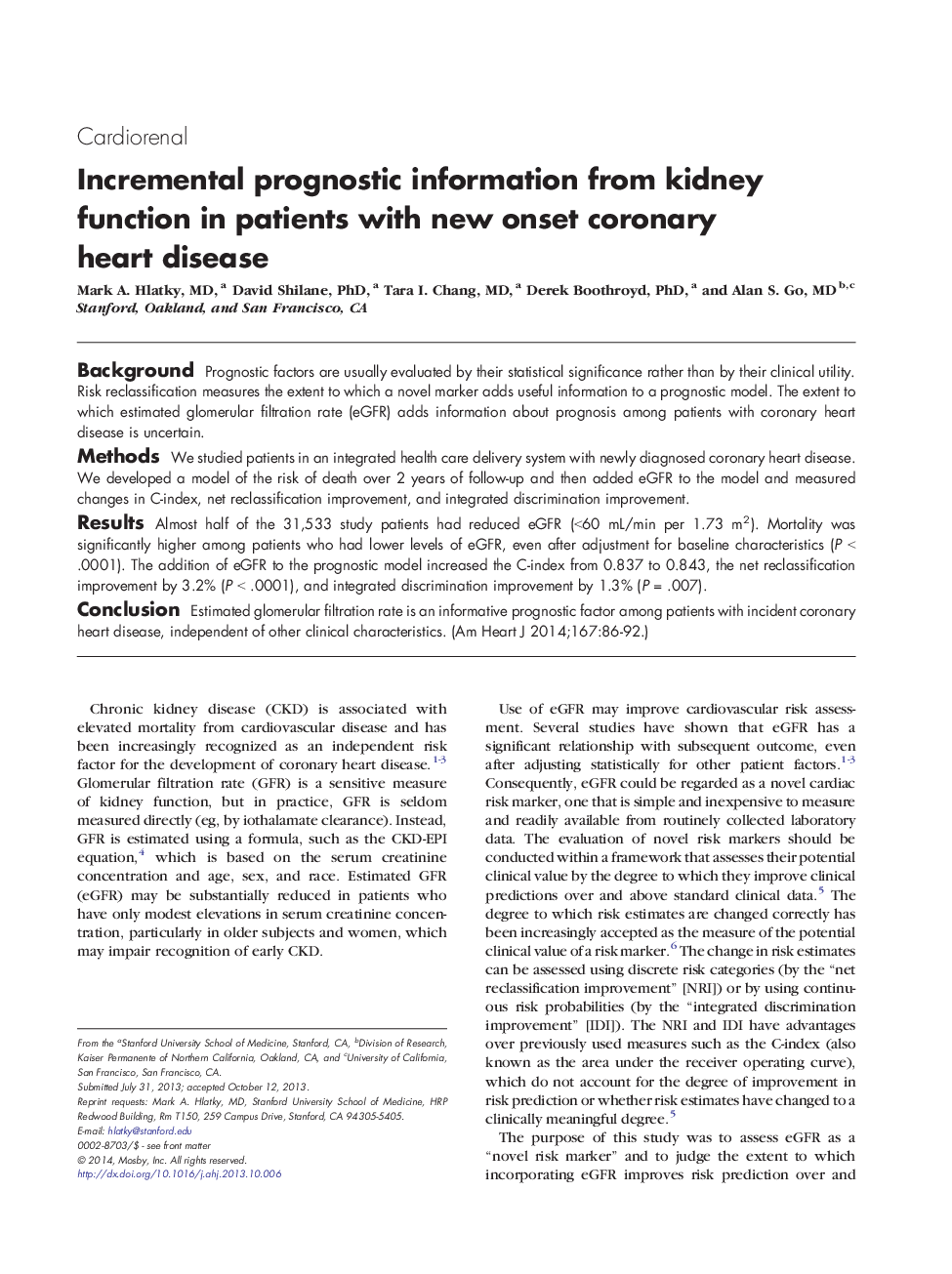| Article ID | Journal | Published Year | Pages | File Type |
|---|---|---|---|---|
| 2850546 | American Heart Journal | 2014 | 7 Pages |
BackgroundPrognostic factors are usually evaluated by their statistical significance rather than by their clinical utility. Risk reclassification measures the extent to which a novel marker adds useful information to a prognostic model. The extent to which estimated glomerular filtration rate (eGFR) adds information about prognosis among patients with coronary heart disease is uncertain.MethodsWe studied patients in an integrated health care delivery system with newly diagnosed coronary heart disease. We developed a model of the risk of death over 2 years of follow-up and then added eGFR to the model and measured changes in C-index, net reclassification improvement, and integrated discrimination improvement.ResultsAlmost half of the 31,533 study patients had reduced eGFR (<60 mL/min per 1.73 m2). Mortality was significantly higher among patients who had lower levels of eGFR, even after adjustment for baseline characteristics (P < .0001). The addition of eGFR to the prognostic model increased the C-index from 0.837 to 0.843, the net reclassification improvement by 3.2% (P < .0001), and integrated discrimination improvement by 1.3% (P = .007).ConclusionEstimated glomerular filtration rate is an informative prognostic factor among patients with incident coronary heart disease, independent of other clinical characteristics.
